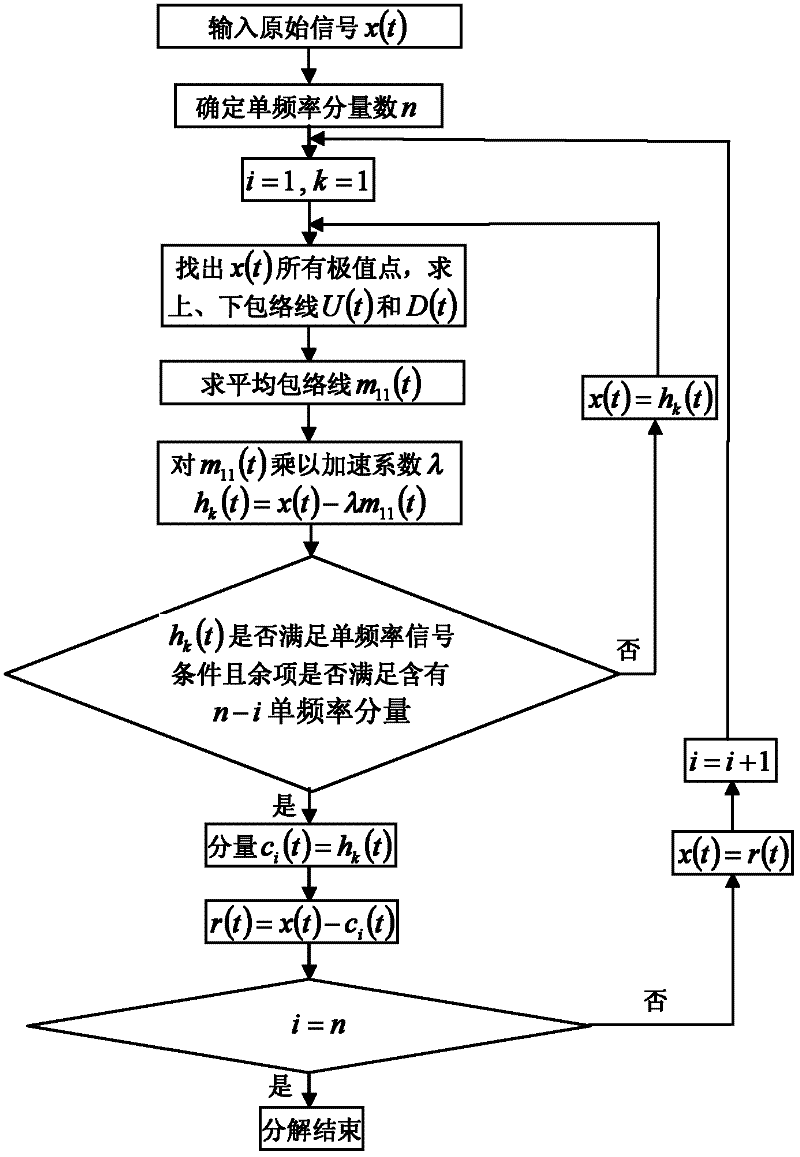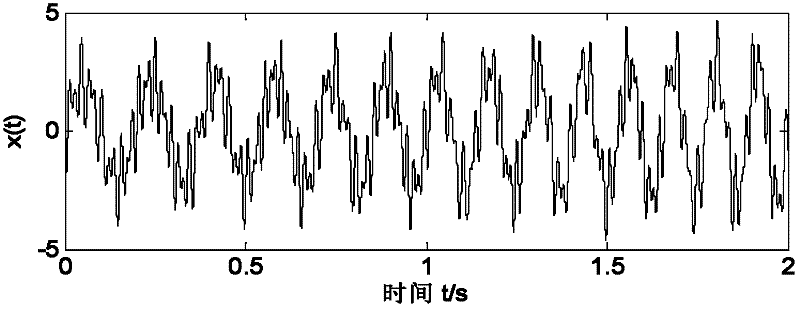Time-varying non-stable-signal time-frequency analyzing method
A non-stationary signal, time-frequency analysis technology, applied in spectrum analysis/Fourier analysis, etc., can solve problems such as low-energy components, lack of theoretical basis for definitions, and unreasonable spectrum characteristics
- Summary
- Abstract
- Description
- Claims
- Application Information
AI Technical Summary
Problems solved by technology
Method used
Image
Examples
Embodiment
[0154] Consider the signal shown in equation (28):
[0155] x(t)=2cos(20πt)cos[100πt+2cos(6πt)]+2e 0.2t sin(10πt+2πt 2 ) (28)
[0156] The sampling frequency is 1000Hz, and the sampling time is 0-2s. The time domain waveform is as follows: image 3 shown.
[0157] Equation (28) can be changed to
[0158] x(t)=cos[120πt+2cos(6πt)]+cos[80πt+2cos(6πt)]+2e 0.2t sin(10πt+2πt 2 ) (29)
[0159] Adopt method of the present invention to carry out single-frequency signal decomposition to it, decompose and obtain c1, c2, c3 components and trend item r(t), such as Figure 4 shown. Depend on Figure 4 It can be seen that the three components correspond to the three components of the simulated signal x(t), therefore, the method of the present invention is based on the self-adaptive decomposition of the signal itself, and each component obtained has a certain physical meaning, reflecting the intrinsic nature of the signal. In the amplitude-frequency-time three-dimensional space, i...
PUM
 Login to View More
Login to View More Abstract
Description
Claims
Application Information
 Login to View More
Login to View More - R&D
- Intellectual Property
- Life Sciences
- Materials
- Tech Scout
- Unparalleled Data Quality
- Higher Quality Content
- 60% Fewer Hallucinations
Browse by: Latest US Patents, China's latest patents, Technical Efficacy Thesaurus, Application Domain, Technology Topic, Popular Technical Reports.
© 2025 PatSnap. All rights reserved.Legal|Privacy policy|Modern Slavery Act Transparency Statement|Sitemap|About US| Contact US: help@patsnap.com



